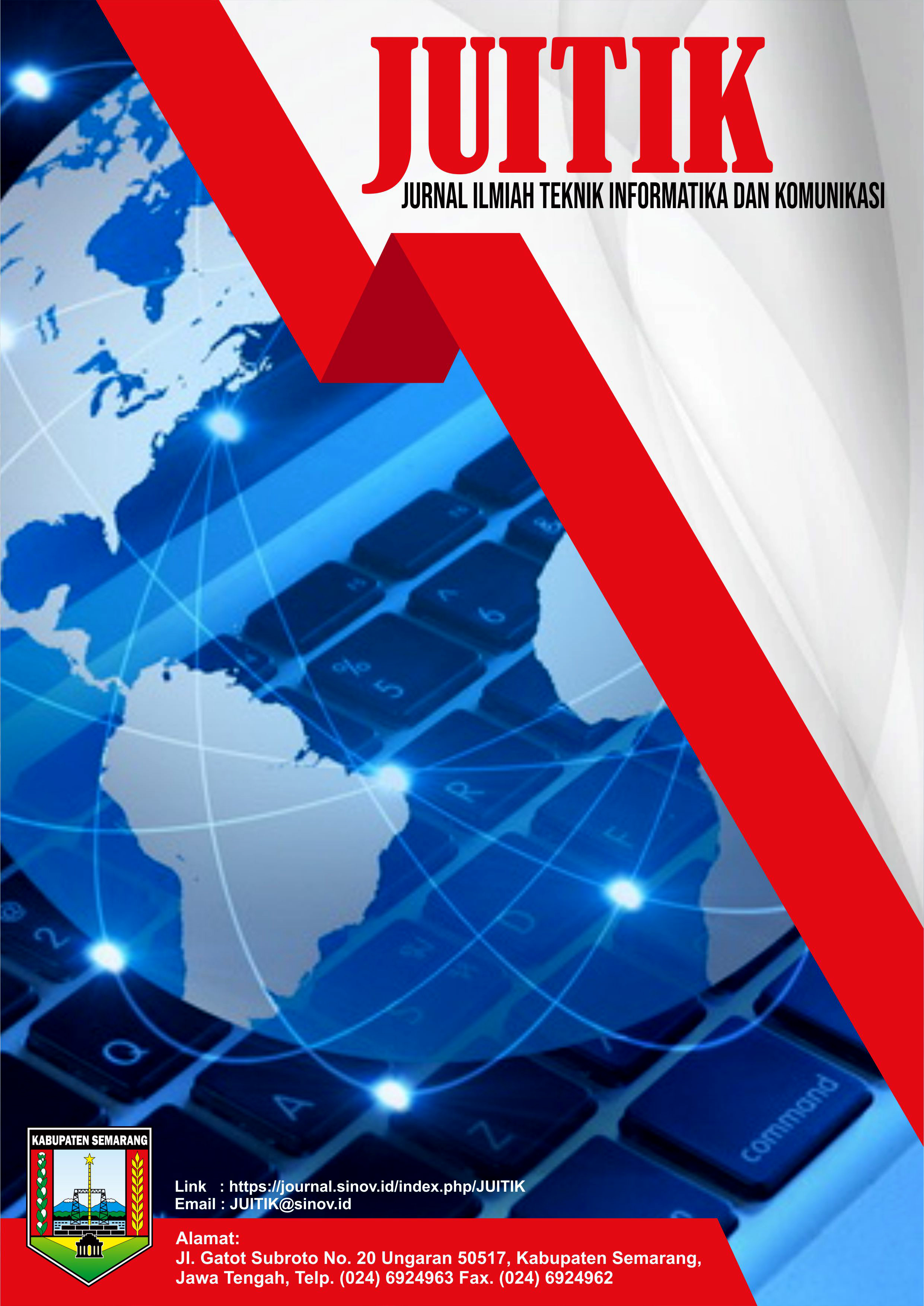Dampak Media terhadap Komunikasi Keluarga
DOI:
https://doi.org/10.55606/juitik.v5i1.1098Keywords:
Family Communication, Digital Media, Social Media, Media ManagementAbstract
The nation's ideals to pay attention to the number of children with Disaster Families are the paradigm of the National Family Planning Family Planning Program which in 2015 had become a Quality Family Program. The type of research in this study is an analytical observational study using case control stimuli which is used to study the extent to which risk factors influence the occurrence of an effect. This research uses a retrospective approach, by identifying causal factors in past events. The sample to be used in this study was 35 mothers who visited the Ely Midwife Clinic and participated in the 3-month injection family planning program from January to April 2022. Acceptors of 3-month injection family planning are at greater risk of experiencing greater weight gain than non-acceptors of 3-month injection family planning, so that 3-month injection family planning has a greater influence than non-acceptors of 3-month injection family planning. 3-month injection contraception is not the main factor causing weight gain, as shown by the results of the Cochran & Mantel Haenszel significance test, the results obtained were X2 count (2.089) < X2 Table (3.841) or p (0.148) > α (0.050) and CI (0.872; 6.118). The benefits of this study can be used as a consideration for further research. Through a larger number of respondents and the number of variables, such as age, food intake, lifestyle, activity, and others. Midwives and other health workers can provide counseling about the side effects of 3-month injection contraception so that there is no concern from the acceptors of the contraception
References
Adi La. (2022). Pendidikan keluarga dalam perpekstif islam. Jurnal Pendidikan Ar-Rashid, 7(1), 1–9. http://www2.irib.ir/worldservice/melayu
Agustina, A. P. (2023). Perubahan Pola Komunikasi Keluarga di Era Digital. Global Komunika, 6(2), 73–80.
Bangko, S., Setiawati, M., & Sriganda, M. L. D. R. (2021). Pola Komunikasi Kelompok dalam Mempertahankan Eksistensi Group Band Element. Gandiwa Jurnal Komunikasi, 1(1), 44–54.
Chatlina, C. B., Mulyana, A., & Amalia, M. (2024). Pengaruh Perkembangan Teknologi Informasi Dan Komunikasi Terhadap Kualitas Hubungan Sosial Dalam Keluarga. KOMUNITAS: Jurnal Ilmu Sosiologi, 7(1), 19–38.
Fadilah, A., Nurzakiyah, K. R., Kanya, N. A., Hidayat, S. P., & Setiawan, U. (2023). Pengertian media, tujuan, fungsi, manfaat dan urgensi media pembelajaran. Journal of Student Research, 1(2), 1–17.
Guo, N., Wang, M. P., Luk, T. T., Ho, S. Y., Fong, D. Y. T., Chan, S. S., & Lam, T. H. (2019). The association of problematic smartphone use with family well-being mediated by family communication in Chinese adults: A population-based study. Journal of Behavioral Addictions, 8(3), 412–419.
Hasan, M., Milawati, M., Darodjat, D., Harahap, T. K., Tahrim, T., Anwari, A. M., Rahmat, A., Masdiana, M., & Indra, I. (2021). Media pembelajaran. Tahta media group.
Koem, S. (2024). Perubahan Media Komunikasi Dalam Pola Komunikasi Keluarga di Era Digital. Jurnal Pendidikan Mosikolah, 4(1), 170–181.
Kusaini, U. N. (2024). Pengaruh Media Sosial Terhadap Hubungan dan Interaksi Antar Keluarga. Innovative: Journal of Social Science Research, 2(1), 1–13. https://edujavare.com/index.php/Aafiyah/issue/archive
Liedfray, T., Waani, F. J., & Lasut, J. J. (2022). Peran Media Sosial Dalam Mempererat Interaksi Antar Keluarga Di Desa Esandom Kecamatan Tombatu Timur Kabupaten Tombatu Timur Kabupaten Minasa Tenggara. Jurnal Ilmiah Society, 2(1), 2. https://ejournal.unsrat.ac.id/v3/index.php/jurnalilmiahsociety/article/download/38118/34843/81259
Nurfadhillah, S. (2021). MEDIA PEMBELAJARAN Pengertian Media Pembelajaran, Landasan, Fungsi, Manfaat, Jenis-Jenis Media Pembelajaran, dan Cara Penggunaan Kedudukan Media Pembelajaran. CV Jejak (Jejak Publisher).
Rafiq, A. (2020). Dampak media sosial terhadap perubahan sosial suatu masyarakat. Global Komunika: Jurnal Ilmu Sosial Dan Ilmu Politik, 3(1), 18–29.
Rahayu, F. S., Kristiani, L., & Wersemetawar, S. F. (2019). Dampak Media Sosial terhadap Perilaku Sosial Remaja di Kabupaten Sleman, Yogyakarta. Prosiding SEMNAS INOTEK (Seminar Nasional Inovasi Teknologi), 3(1), 39–46.
Ramdani, C., Miftahudin, U., & Latif, A. (2023). Peran Keluarga Dalam Pendidikan Karakter. Banun: Jurnal Pendidikan Islam Anak Usia Dini, 1(2), 12–20.
Rohman, M. (2024). Dinamika Konflik Keluarga Era Digital: Pengaruh Media Sosial terhadap Hubungan Keluarga. MASADIR: Jurnal Hukum Islam, 4(02), 911–929.
Septia, L. C. (2023). Perubahan Pola Hubungan dan Pengasuhan Dalam Keluarga di Era Digital. Prosiding Seminar Nasional, 335–340.
Sofiawati, S., Pratiwi, W. D., & Pranawukir, I. (2024). Pola Komunikasi Kelompok Komunitas Spartan Komando (Sparko) Jakarta Dalam Mempertahankan Eksistensinya. DIALEKTIKA KOMUNIKA: Jurnal Kajian Komunikasi Dan Pembangunan Daerah, 11(2), 168–180. https://doi.org/10.33592/dk.v11i2.4306
Sunyoto, D., Wahyuningsih, A., & Kalijaga, M. A. (2024). Manajemen Komunikasi Keluarga di Era Teknologi. Jurnal Pendidikan Tambusai, 8(2), 21034–21043.
Suryani, I., Fatiha, P. A., Salsa, N. H., Rizqiah, N., Rahmadani, S., Sari, V., & Hakiki, M. (2025). Dampak Teknologi Komunikasi Terhadap Komunikasi Keluarga. AL-MIKRAJ Jurnal Studi Islam Dan Humaniora (E-ISSN 2745-4584), 5(2), 900–913.
Syukur, T. A., Al Haddar, G., Fahmi, A. I., Risan, R., Siswantara, Y., Setya, D. N., Zaenurrosyid, A., & Maq, M. M. (2023). Pendidikan Anak Dalam Keluarga. Pt Global Eksekutif Teknologi.
Tika Dewi Amelia, L., & Rania Balqis, N. (2023). Changes in Communication Patterns in the Digital Age. ARRUS Journal of Social Sciences and Humanities, 3(4), 544–556. https://doi.org/10.35877/soshum1992
Yulianti, Y., & Astuti, M. T. (2023). Komunikasi keluarga sebagai sarana keharmonisan keluarga. Innovative: Journal Of Social Science Research, 3(2), 4609–4617.
Downloads
Published
How to Cite
Issue
Section
License
Copyright (c) 2025 Jurnal Ilmiah Teknik Informatika dan Komunikasi

This work is licensed under a Creative Commons Attribution-ShareAlike 4.0 International License.










